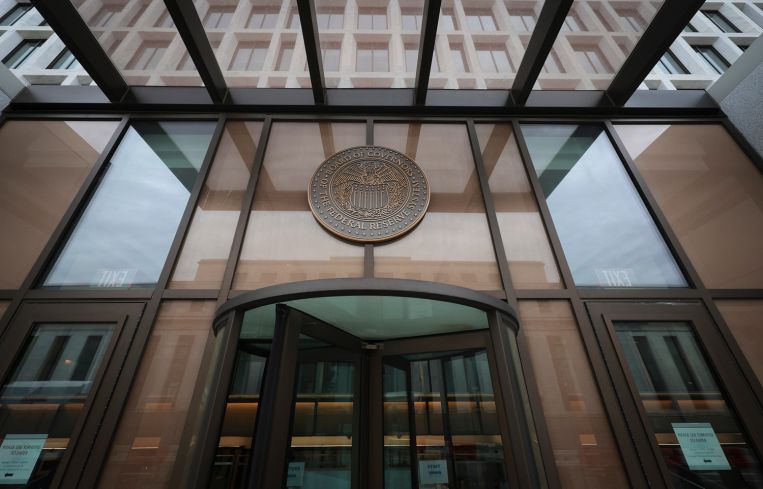Fed Signals End to Rate Hike Cycle Following 10th Straight Increase
By Andrew Coen May 3, 2023 2:41 pm
reprints
The Federal Reserve continued its more than yearlong streak of interest rate hikes on Wednesday, bringing rates to their highest level since 2007, but also signaled a pause could be around the corner.
The 25 basis point increase raises the interest rate to between 5 and 5.25 percent, but the central bank indicated a policy shift to end the pattern of hikes, bringing some relief to the commercial real estate market participants who have been contending with increased borrowing costs.
The Federal Reserve’s post-meeting statement left out the sentence that it “anticipates that some additional policy firming may be appropriate” for it to achieve its 2 percent inflation goal, which the Fed included when it announced its last quarter-point hike in March.
The Fed has now unleashed 10 consecutive rate increases dating back to St. Patrick’s Day 2022 in an effort to fight inflation, creating a far different climate than the near-zero borrowing conditions that were in place to start last year.
Fed Chair Jerome Powell told reporters Wednesday “a decision on a pause was not made today” but added that the statement language change was is “meaningful.”
Thomas LaSalvia, a senior economist at Moody’s Analytics who specializes in commercial real estate, said he is hopeful that a stoppage in the Fed’s rate hikes will help jump-start an investment sales market that has been largely stalled amid uncertainty about where borrowing costs would end up.
“If they get a sense that the rate hikes are largely over we might start to see the math starting to become a little clearer for deals out there,” LaSalvia said. “We’re not going to see the floodgates open for transactions, but it does allow more certainty in the math for transactions going forward.”
LaSalvia added that clarity about where interest rates are headed will also help lenders know rates to charge for financing and give them flexibility in the way deals are structured.
There has been a big drop in CRE lending since the Fed’s 75 basis point hike was implemented last June, with big banks largely on the sidelines. Lending challenges were further compounded following the failures of Silicon Valley Bank, Signature Bank and First Republic Bank.
Sam Chandan, director of New York University’s Chen Institute for Global Real Estate Finance, noted that while the CRE industry is still contending with high borrowing costs and tighter credit conditions coinciding with recent regional bank failures, a stop in the rate hikes will bring some relief.
“The market will be able to navigate in an environment of rate stability, which is different from an environment in which with each subsequent meeting rates are going up,” Chandan said. “While being at or close to the peak in the rate cycle presents challenges for the industry, we can take some comfort in the likelihood of rate stability over the course of 2023.”
Chandan added that the Fed’s change in direction with raising rates would also aid property owners with floating-rate debt who have been hammered from soaring costs for interest rate caps typically required by lenders.
Borrowers who purchased two-year interest rate caps in 2021, prior to the Fed’s hawkish strategy, are now faced with substantially higher costs for new hedges, which has forced some borrowers to either hand back keys to lenders or sell their properties at a discount.
Andrew Coen can be reached at acoen@commercialobserver.com.


